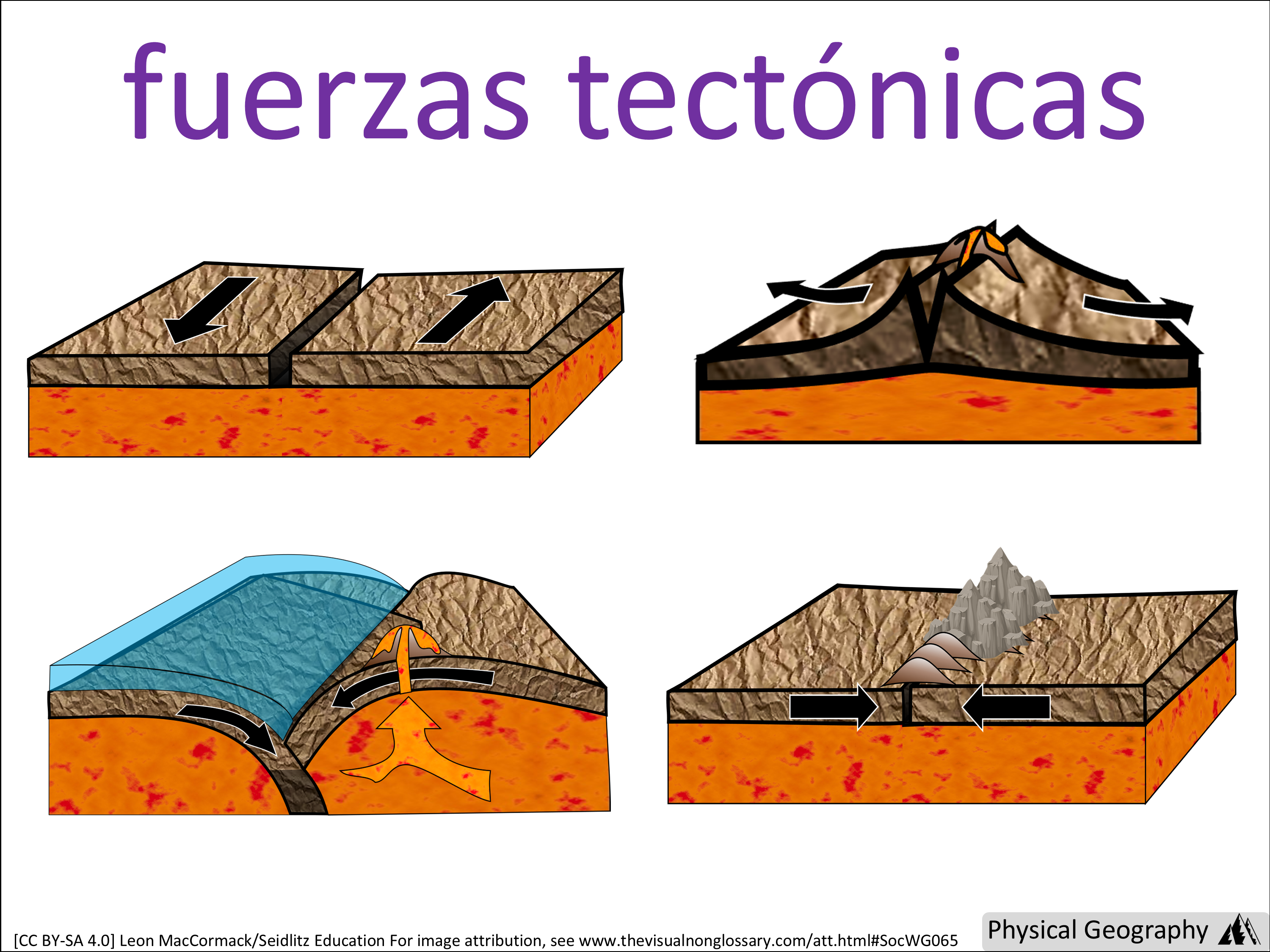fuerzas tectónicas: Geografía del mundo 🌐 View in English
Geography
Physical Geography
Vertical Alignment
TEKS:
| World Geo | WG.3(B) WG.3(A) WG.4(B) |
Linked To
Downloads
- Visual
- Word wall visual
- Lesson Plan
- Lesson Materials
Structured Conversation Questions
Observational
¿Qué son las fuerzas tectónicas?
Las fuerzas tectónicas son...Relational
¿Cómo están relacionadas las fuerzas tectónicas con el Gran Valle del Rift?
Las fuerzas tectónicas están relacionadas con el Gran Valle del Rift porque...Inferential
¿Qué fuerza tectónica crees que representa el mayor desafío para los asentamientos humanos? ¿Por qué?
La divergencia/convergencia/subducción es la fuerza tectónica que representa el mayor desafío para los asentamientos humanos porque...
Please log in to comment.
Students might notice in this visual:
- Las flechas muestran diferentes tipos de fuerzas tectónicas como convergencia, divergencia y subducción.
- Las placas terrestres están etiquetadas y se muestran interactuando en sus límites.
- El Gran Valle del Rift está marcado en África oriental en un límite divergente.
- Se muestran volcanes y cordilleras donde las placas chocan.
- Cada tipo de límite (convergente, divergente, de subducción) tiene un movimiento diferente.
EXTENDING THE DISCUSSION
After the observational question, randomly call on one or more students to share what they or their partner answered. Then ask the class, “Did anyone notice…?” using the suggestions above or anything else you’ve noticed.
After the observational question, randomly call on one or more students to share what they or their partner answered. Then ask the class, “Did anyone notice…?” using the suggestions above or anything else you’ve noticed.
Students might wonder:
- ¿Por qué algunas fuerzas tectónicas forman montañas y otras forman valles?
- ¿Cómo saben los científicos dónde están los límites de placas?
- ¿Qué les pasa a las personas que viven cerca de zonas de subducción?
- ¿Qué tan rápido se mueven las placas tectónicas?
- ¿Por qué es importante el Gran Valle del Rift en la geología?
EXTENDING THE DISCUSSION
After students have shared what they notice, ask the class, “Did anyone wonder…?” using the suggestions above or anything else you might think is interesting or relevant to the lesson.
After students have shared what they notice, ask the class, “Did anyone wonder…?” using the suggestions above or anything else you might think is interesting or relevant to the lesson.
Example student responses
To the observational question, ¿Qué son las fuerzas tectónicas?
LOW-LEVEL
Las fuerzas tectónicas hacen que las placas se muevan y cambien la tierra.
HIGH-LEVEL
Las fuerzas tectónicas son movimientos de las placas terrestres que forman características físicas como montañas, valles y fosas por medio de procesos como la convergencia, divergencia y subducción.
RESPONDING TO RESPONSES
Emphasize and celebrate each student’s use of the key vocabulary to support a culture of “no wrong answers.”
Emphasize and celebrate each student’s use of the key vocabulary to support a culture of “no wrong answers.”



